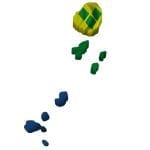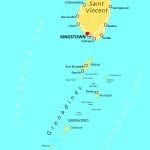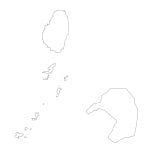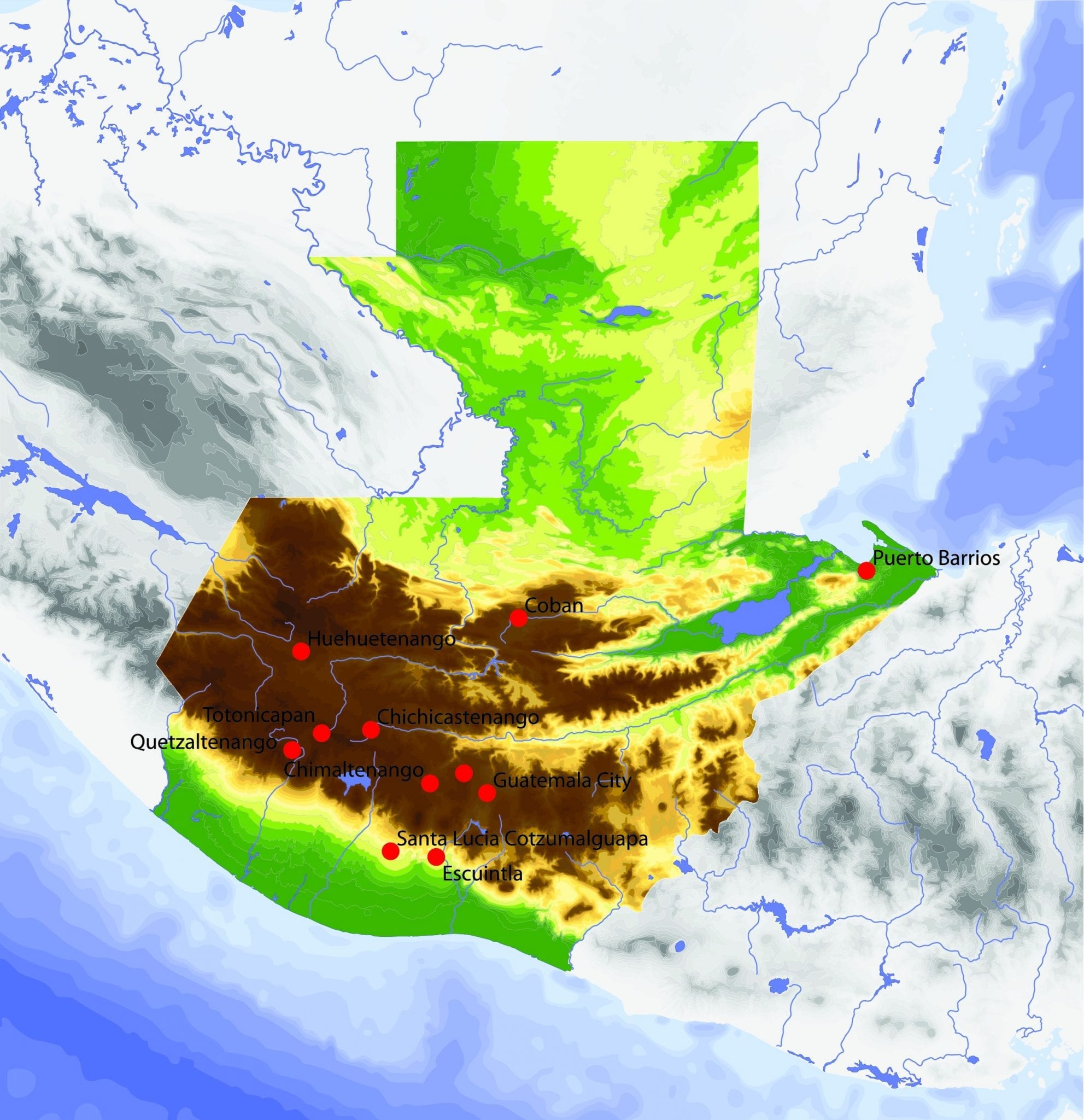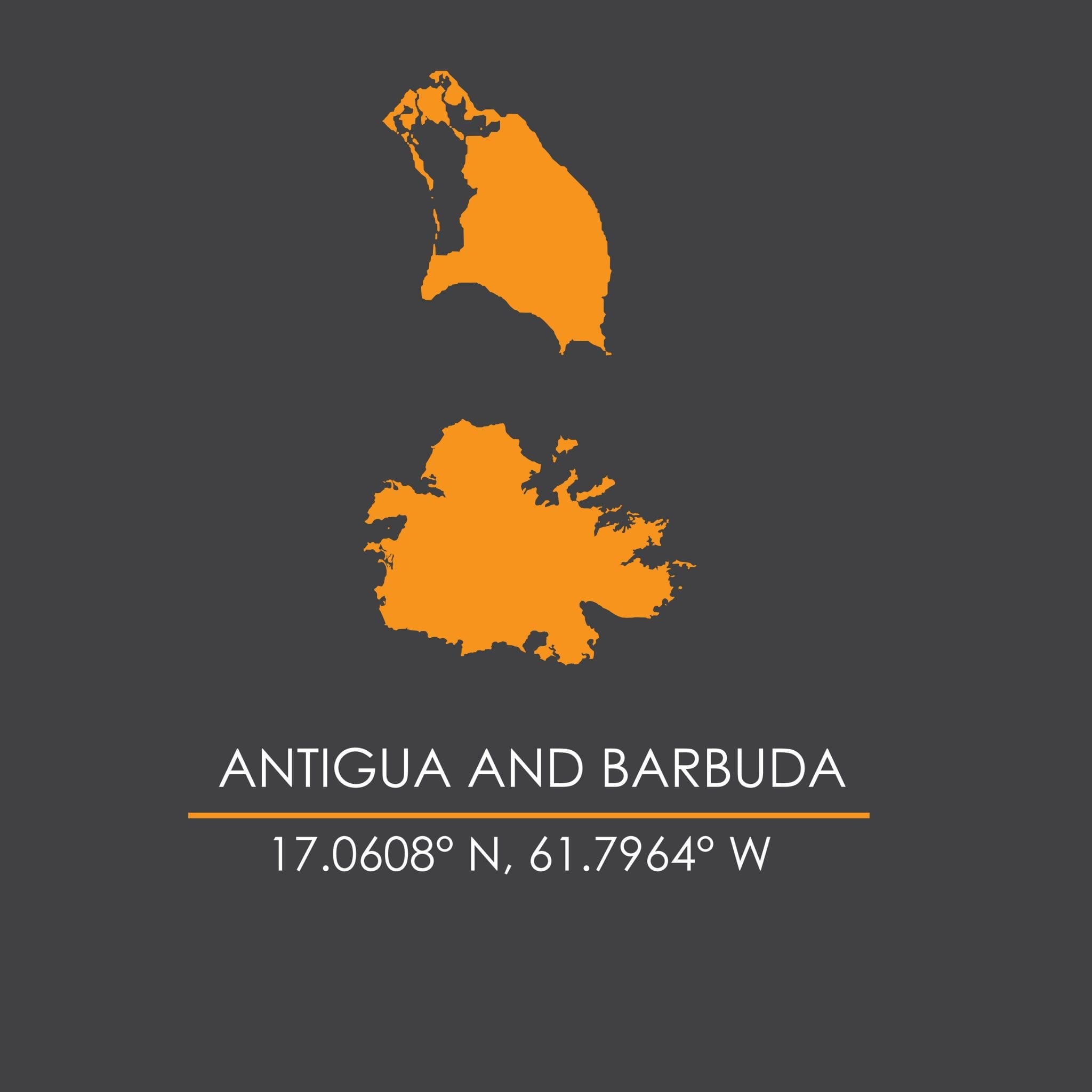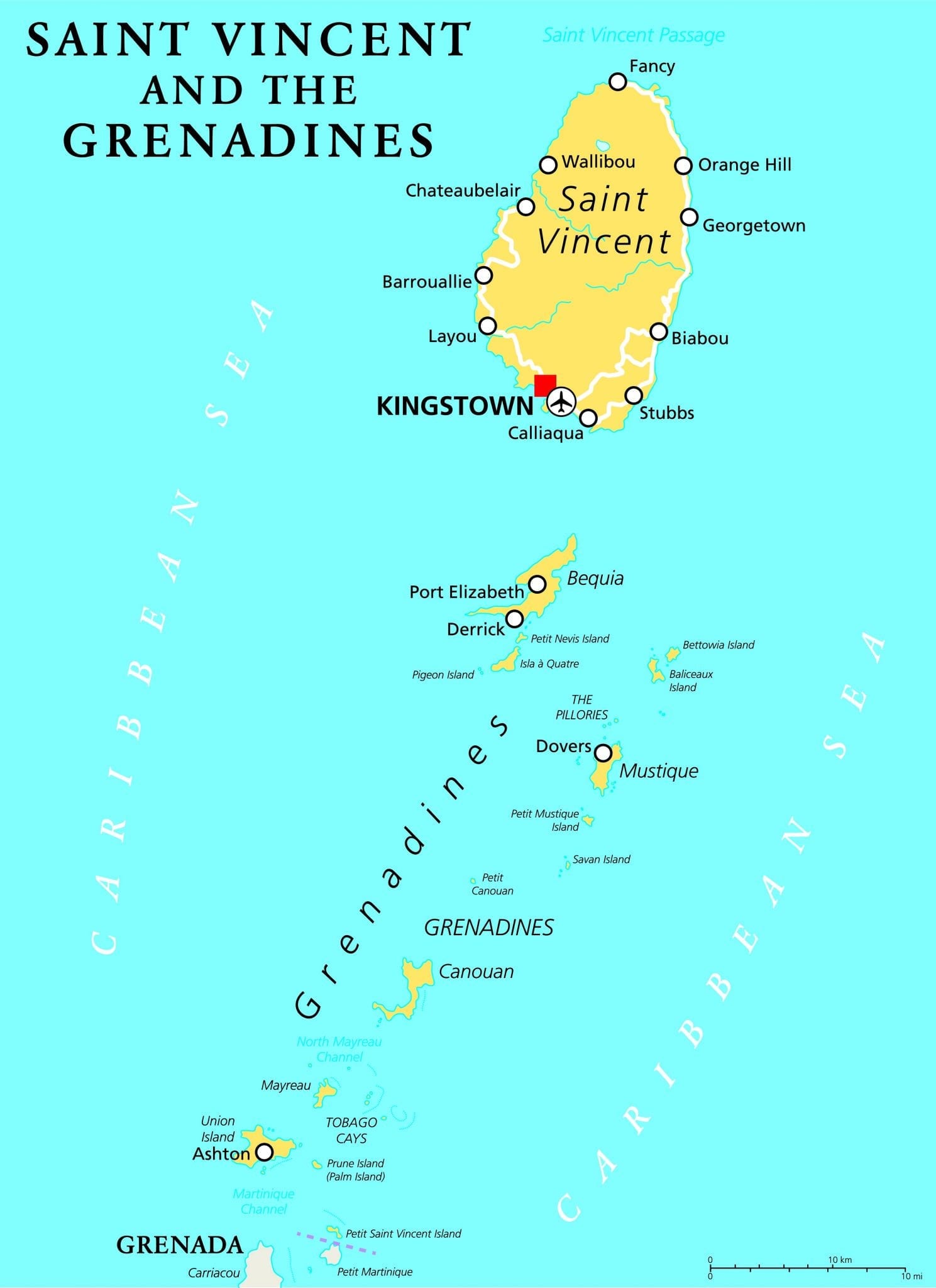
Map of St Vincent and the Grenadines
Welcome to our digital Caribbean journey! Today, we will be making a tour onto the heavenly lands of North America’s paradise, St Vincent and the Grenadines. Stay calm and be with us throughout this mind trip. We will be talking about its location, flag, language, culture, places to visit and much more. Read this blog till the end to get some intriguing information on this country.
St Vincent and the Grenadines Location
So, you are looking at a world map and want to know where St Vincent is located. Make a turn to the western hemisphere area where you find the continent of North America. Zoom in to the West Indies and look at the blue portion- the Caribbean Sea. Move to the eastern side of the Caribbean in the Lesser Antilles. Again, zoom in and you will observe the windward islands making an arc. Spot the second last country along the southern side of this arc situated between Grenada and St Lucia. Congratulations! You have just reached our joyful destination for today’s expedition. i.e., St Vincent and the Grenadines.
More specifically, it is an island country comprising mainland St Vincent and almost 32 Grenadines to its south. Almost 9 of them are inhabited while others are barren. To the western side are open Caribbean waters and to the eastern direction is Barbados.
St Vincent and the Grenadines Flag Facts

Saint Vincent had various flags throughout the evolution of history from being a British colony to an independent state. The very first flag was a blue ensign having the country’s coat of arms that consisted of a cotton plant at its top and a text at the very base meaning ‘peace and justice’. Middle of the badge showed two women wearing classic roman dresses, one having an olive branch in her hand and the other kneeling before a gold altar. This flag continued till 1979.
St Vincent and the Grenadines Old Flag
In 1979, as the country gained independence and a national flag was to be adopted. A native Vincentian Elaine Liverpool created the first national flag. This flag had three vertical bands distinct by thin white borders in a sequence of blue, yellow, and green. The yellow band was imprinted with the coat of arm onto a breadfruit leaf. Although this national flag continued for almost 15 years there were often many critiques regarding its complex design. It was difficult to manufacture on a reasonable budget. Too many finances were spent on this flag design and even after that, the coat of arms and the leaf were not easy to be distinguished when seen from some distance.
St Vincent and the Grenadines New Flag
In 1994, New Democratic Party won elections and the new prime minister James Mitchell announced the flag’s remaking. Soon after this announcement a competition held countrywide, and many entries came up. However, none were found suitable. The Prime Minister forwarded the task to a Swiss graphic artist Julien van der Wal. Government asked him to modernize the flag by keeping the esteem and meaning of all the symbols. Julien van der Wal erased the narrow white borders between the vertical bands and substituted the coat of arms and breadfruit leaf with three green diamonds appearing as V. Hence, came forward the present national flag of St Vincent and the Grenadines, a tricolour vertically striped blue, yellow, and green with three green jewels in the middle. The yellow stripe is thicker than the green and blue ones. The flag has a proportion of 2:3.
St Vincent and the Grenadines Flag Meaning
The colours and the pattern of a flag are selected very technically. It is not meant for mere show off rather they depict a country’s strength, resources, values, pride, and various geological, political, or historical aspects. That is why whenever a flag is to be developed, the project is supervised with a firm vigour and enthusiasm by authorities.
The flag of St Vincent and the Grenadines has been devised and redesigned multiple times. The present flag represents the country’s geography, vigour, and vitality. A viewer can get a full note of its lands through a simple glace on this flag. Let us get a detailed look at its design and decode its meaning.
The blue colour speaks for the sky and the sea. Green means rich plantation and livelihood of the public. Yellow personifies the gold and white sand beaches along with the sunshine and a blazing spark of the nation. The three green diamonds have a very technical part because seeing them reminds one of the country’s nicknames, ‘Gems of the Antilles’ and the ‘Jewels of the Caribbean’. The alignment of these diamonds in V form is a reference towards Vincent. Probably, it is one of the extraordinary flags whose pattern also has a clue for the location. These green diamonds crafted lower than the central point signify a geospatial position of islands in the Antilles.
St Vincent and the Grenadines Population
The total population is about 110,945 people ranking at 196th position on the list of ‘the official countries (and dependencies) by population’ according to the United Nation records. St Vincent and the Grenadines population density is 284 per kilometre square. On a comparative scale, the populated public land of Vincents makes less than 1% of the total world population. The total area stretches across 390 Kilometer square. A recent estimate shows that more than half of the total population (52.9%) resides in urban areas. The median age in St Vincent and the Grenadines area is 32.9 years. The annual population change rate for the last decade has extended from -0.07% to 0.32%. Most of the people belong to African descent however the other ethnic groups include East Indian, Caribs, and Portuguese.
St Vincent and the Grenadines Language
The islands of Vincent and Grenadines have been captured by French and British Empires. French came here first, and then the British Empire ruled over. Since the country was a British colony for a very long time, the English language grew here efficiently. Even today, English is the official language. Another reason for the prominence of English in these islands is their proximity to America.
Vincentian Creole is a local tongue spoken among people for non-official conversation and proceedings. This language has a root to the African slaves who communicated with the officials and learned their vocabulary. Vincentian Creole is a dialect and does not reach to the language status since it has no grammar rules however, some commonalities can be observed. For example, the words ending at ‘own’ in English are replaced by an ‘ung’. That means if they are to say ‘grown’, they will make it sound like ‘grung’.
The third language that you can find some traces here is French Patois. It dates to French settlers. This language is mostly spoken among the families having a European descent. It has a mixed set of rules from English, French, African and Spanish languages.
St Vincent and the Grenadines Interesting Facts
- The topography of these islands is majorly volcanic with rocky terrain, splendorous beaches, and crystal blue waters.
- The volcano origins make up most of the black sand beaches in Saint Vincent mainland. However, some white sand beaches also exist in northern Grenadines such as Bequia, Union Island, Mustique and Canouan.
- Kingstown is the capital city and famous for its 400 arches winning a nickname as the city of Arches.
- Even if you have not visited the country you must have seen these islands before. All the parts of the blockbuster movie, Pirates of the Caribbean were filmed here.
- There is still an active volcano in Saint Vincent Island known as La Soufriere. The last eruption occurred in 1979.
Places to Visit in St Vincent and the Grenadines
- Tobago cays offer a pleasant and soothing scuba diving experience. The beaches are preserved with reefs and have calm waters. It is the best spot to watch marine life closely.
- Palm Island, a short boat ride from Union Island, offers astonishing scenes. Palm trees all along its coastline and the pure white sand grains rolled by turquoise water feel like heaven on earth.
- Whenever you visit St Vincent, never miss hiking at La Soufriere. It is still active that makes it more adventurous. The guided hike to the crater is full of fun, suspense, and thrill. You will encounter the beautiful views, novel plantations and amazing rainforests.
- Kingstown is the main cultural and economical hub with multiple fun activities. It is quite renowned for the oldest botanical gardens (since 1765) and the historical churches such as St. George’s Anglican Cathedral (since 1820).
- If you are up for yachting and snorkelling, welcome to the crystal waters of Canouan Island. The beautiful white sand beaches with the bright sun are perfect for basking.
- Not just hillside beach resorts but the Bequia island also provides the tourists with shopping opportunities. Port Elizabeth is its commercial hub with top-notch stores and delicious restaurants.
- So, these were some quick mind journey clips. We hope you enjoyed it. We recommend you take a full tour of these cays and islands. If you want to get some inspiration about the other Caribbean lands, read out our other blogs.
BOOK HOTEL IN ANY PART OF ST VINCENT AND THE GRENADINES AT GREAT PRICES


